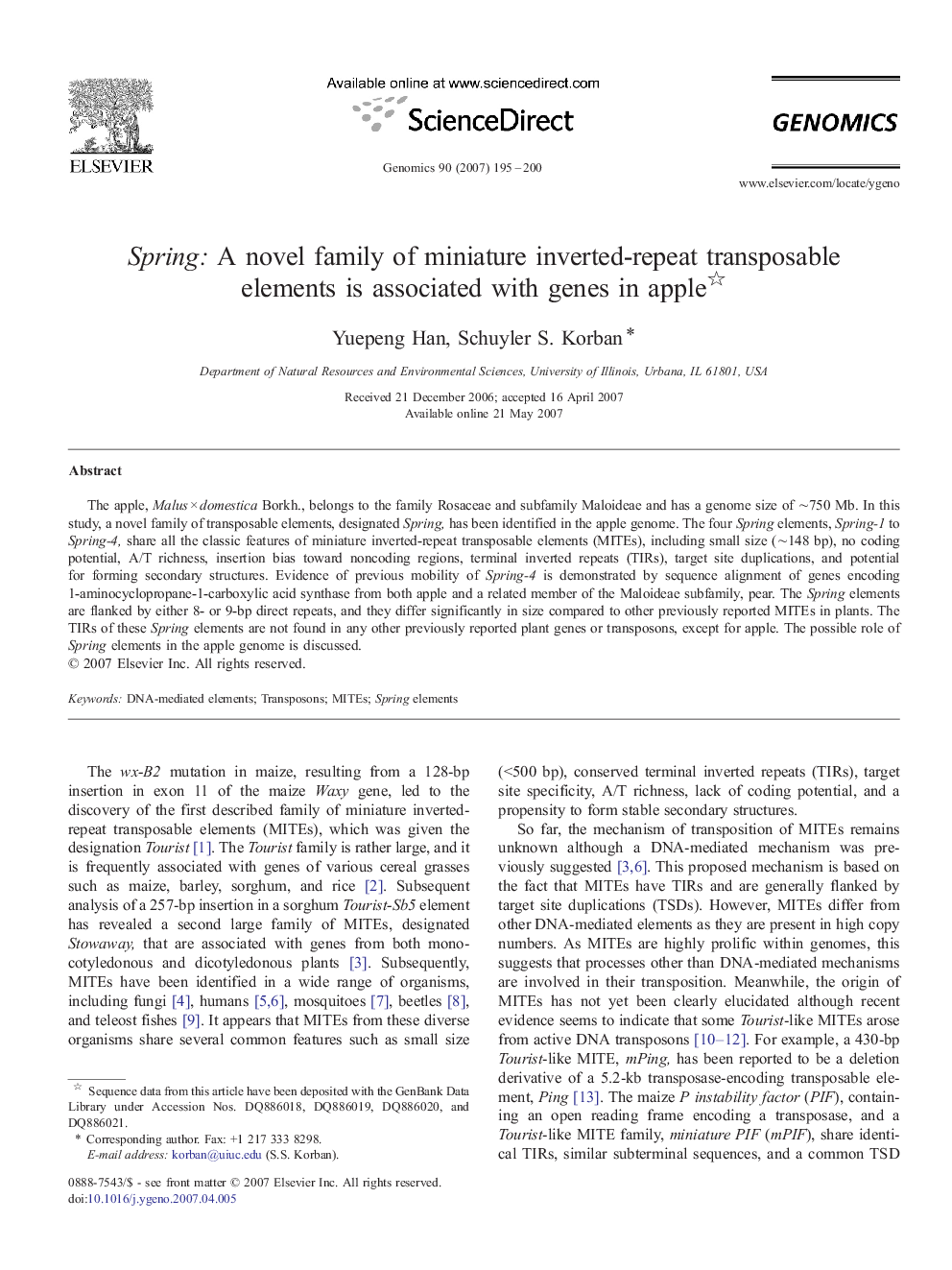| Article ID | Journal | Published Year | Pages | File Type |
|---|---|---|---|---|
| 2821102 | Genomics | 2007 | 6 Pages |
The apple, Malus × domestica Borkh., belongs to the family Rosaceae and subfamily Maloideae and has a genome size of ∼750 Mb. In this study, a novel family of transposable elements, designated Spring, has been identified in the apple genome. The four Spring elements, Spring-1 to Spring-4, share all the classic features of miniature inverted-repeat transposable elements (MITEs), including small size (∼148 bp), no coding potential, A/T richness, insertion bias toward noncoding regions, terminal inverted repeats (TIRs), target site duplications, and potential for forming secondary structures. Evidence of previous mobility of Spring-4 is demonstrated by sequence alignment of genes encoding 1-aminocyclopropane-1-carboxylic acid synthase from both apple and a related member of the Maloideae subfamily, pear. The Spring elements are flanked by either 8- or 9-bp direct repeats, and they differ significantly in size compared to other previously reported MITEs in plants. The TIRs of these Spring elements are not found in any other previously reported plant genes or transposons, except for apple. The possible role of Spring elements in the apple genome is discussed.
